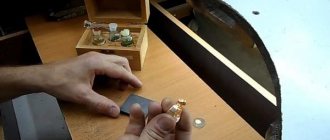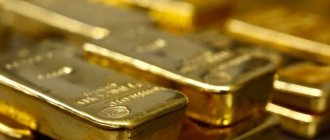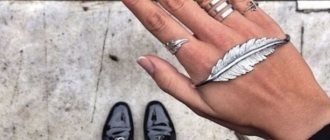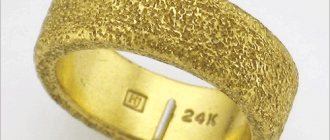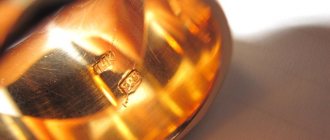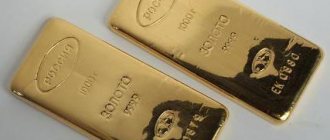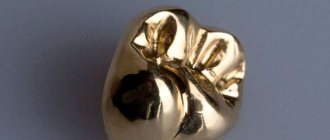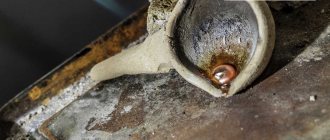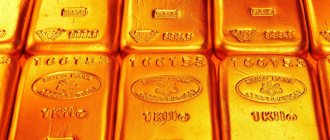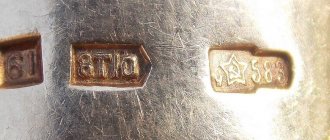Among the methods of assay analysis there are: droplet, muffle, chemical-analytical, touchstone analysis. Most often, when determining a sample, the drip method is used (consists of applying a special assay reagent to the test sample) and analysis on a touchstone (features are applied to the stone with a product and an assay needle, after which they are moistened with the reagent and the color of both features is compared to determine the sample). The sample is also determined by an electronic detector using non-destructive testing.
What is a touchstone
Siliceous shales meet the above conditions. For example, they use black jasper. In Russia, the shungite rock is mainly used. Its deposits are located in the Urals. There are also deposits in neighboring countries - in the Karelian Autonomous Soviet Socialist Republic and near the city of Tbilisi. In the far abroad countries of Asia Minor are rich in siliceous shales.
In ancient times, the area where deposits were concentrated was called Lydia. Hence the second name of the touchstone - Lydian. The name touchstone is also found in the literature. It refers to a block used to determine the alloy sample.
A whetstone is a standard form of touchstone, which also comes in the form of a thin plate. There are synthetic samples. They are obtained by sintering the charge. This means a mixture of raw materials for something.
In this case, crumbs of potassium spar and glass are taken. Sometimes, ceramic shards are taken. Artificial stones are less effective because they are not as resistant to chemicals. The essence of the method is precisely that the assay block serves only as a background. So, let's study the process.
Restoring jewelry at home
Do not confuse the care that all jewelry without exception requires with specialized cleaning. At home, you need to maintain the condition, but not do any restoration work. Numerous articles on the topic: how and with what to clean silver and gold are a consequence of demand. People are looking for simple solutions, wanting to solve the problem on their own and without high costs.
On our website you can purchase napkins with and without impregnation made from suede, cotton and other materials. They are used for manual removal of dirt, degreasing, polishing, and applying a protective layer. The product catalog includes both universal wipes and narrowly targeted ones - for cleaning silver, gold, precious stones, etc. They are more suitable for maintenance than for serious restoration.
Shampoos, pastes, gels, sprays, which contain small abrasive particles and chemically active substances, are particularly effective. They are readily purchased by private jewelers and actively used in professional practice. How to clean gold to increase consumer attractiveness? Products for adding shine. The assortment of the CLIO online store also includes solutions for the care of display equipment that effectively remove marks and are gentle on work surfaces.
How to determine a sample using a touchstone
How to use a touchstone ? An alloy is rubbed over it, a sample of which must be checked. A line is drawn nearby with a special needle. It is included in a standard set of 6 rods. At the end of each of them is attached a piece of a precious standard. The first needle corresponds to the 375th standard of gold, the last - to the 999th marking.
The features from the test sample and the needle should be of the same saturation. To compare samples, 0.00001 to 0.0001 grams of metal is sufficient, so even finished products are not damaged during the procedure. After leaving the features, the reagent comes into play. It is applied to a glass rod and dripped onto the rubbed areas.
The chemical substance reacts only with the alloy master alloy, that is, the impurities it contains. The more there are, the brighter the line is colored. All that remains is to compare the mark from the sample being tested with the mark of the reference needle. If the color of the stripes matches, then the alloy corresponds to the declared sample. It takes 20-30 seconds to react.
In order for the study to give the most accurate result, preliminary processing of the touchstone is required. Its surface is cleaned and lubricated with oil. Typically, nut, almond and cedar are used.
Touchstone bars
After oil treatment, the block is thoroughly wiped. A protective layer on the stone is necessary so that the metals leave dense, even, clearly visible features. Their width is about 5 millimeters and their length is about 2 centimeters.
A solution of chloroauric acid is used as a reagent for alloys up to 600 standard. Gold chloride does not react with high-grade metal. Dilute nitric acid is also used, but it is effective when studying materials up to the 500th marking, that is, with a precious element content of no more than 50%.
Alloys 750, 833, 900, 916, 958, 999 samples are washed with a mixed reagent of nitric and hydrochloric acids. The concentration of the latter is increased in proportion to the size of the marking. According to Russian GOST standards, jewelers are required to have only 6 needles of 375, 500, 585, 750, 958, 999 samples. The rest is provided by the craftsmen at will.
How to clean gold jewelry?
If gold jewelry has lost its “marketable” appearance, has darkened, or traces of oxidation have appeared on it, this means that the product requires thorough cleaning.
Not many people know that all gold jewelry contains not only gold, but also some silver, zinc, copper and other metals. It is not practical to use pure gold alloy, since it does not hold its shape well and is deformed even from the slightest touch with your fingers. However, these additives not only make the precious metal hard, but also cause it to oxidize. There are several other factors that negatively affect the quality of gold products:
- decorative cosmetics, fatty creams;
- city smog, dust;
- fats formed during human life (sebum).
But how can you clean gold at home so that it shines like new?
How accurately does a touchstone determine a sample?
The error in determining samples of gold-containing alloys is approximately 0.3%. That is, when examining a sample, the deviation is up to 3 sample units.
When working with platinum and palladium, the error is approximately the same. The situation with silver is more complicated. Here the deviation is from 5%. This was the reason for the almost complete refusal of jewelers to determine the conformity of silver with markings using a touchstone.
Touchstone is a method for determining a sample at minimal cost. The bars cost about 300-500 rubles. One plate is enough for a lifetime, and there will still be some left for the receivers, because they don’t sharpen knives with a stone, but only use it as a background for a chemical reaction.
Arsenal 20 ways to clean gold
To clean expensive products from fresh and dried dirt, please note that when using liquid products, you need to place foil at the bottom of the container. This will make your rings and earrings sparkle. Common cleaning methods to eliminate visible defects (plaque, dirt, fatty components):
- an aqueous solution with ammonia or ammonia: hydrogen peroxide (30 mg), ammonia (1 tsp), 250 ml of water, rings and earrings should be soaked in the solution until they are clear of plaque;
- hydrogen peroxide (40 mg), add ammonia (1 tsp) and water (1 glass), liquid soap (2 tsp);
- toothpaste, powder: both products provide a cleansing effect; it is enough to apply a little substance (without abrasives in the composition) on a rag to remove dirt;
- foil and soda: leave foil at the bottom of the container, pour in the prepared liquid (2 tablespoons of soda, 200 ml of hot water), leave the decorations overnight;
- "Fairy" and other dish detergents: add 1 tsp. of this product in water without other additives, place in a water bath, place decorations in the container and boil for several minutes:
- liquid soap with peroxide: take the components in a ratio of 1:2, add warm water, soak the gold for 20 minutes;
- salt solution: you will need 3 tbsp. l., as well as hot water (no more than 250 ml), when the salt has dissolved, the decorations are immersed in the solution;
- lens product: do not dilute it, use it in its pure form - soak the jewelry overnight, clean it with water without additives in the morning;
- sugar syrup: the sweet component is dissolved in water (it is better to immediately use lukewarm liquid) - 2-3 tbsp. l. and 200 ml, soak gold for several hours;
- vinegar 9-%: prepare a solution based on water and table vinegar - the recommended ratio is 1:1, the method is effective, but only if the decorations remain in the solution for at least 30 minutes;
- citric acid and citrus fruits: citric acid (1/4 tsp) is dissolved in hot water (125 ml), gold is left in the liquid for a short time (5 minutes), and the acid can be replaced with lemon juice;
- hygienic lipstick: applied to rags, rub gold jewelry with it until they begin to shine;
- onion juice - take 1 piece, you need to dilute it with water (2 tbsp), soak bracelets and earrings for at least 3 hours;
- baking soda solution: mix soda with water (the amount is determined at your discretion), then rub rings, gold bracelets, and then rinse;
- “Coca-Cola” and other fizzy drinks: products become shiny when using the drink without additives, leave decorations in the container, fill them with Cola, after 2 hours they can be cleaned, this method is suitable not only for gold, but also for silver, with the exception of products with stones;
- medical alcohol or vodka: there is no need to leave jewelry in an aggressive environment, moisten a woven cloth with alcohol and rub the product - this method is one of the fastest;
- alcohol-containing perfume: it may seem that it helps with contamination of gold, but this is not entirely true, because it is upon contact with such substances that the external parameters of jewelry deteriorate, which means that perfume can be used to clean gold, which contains a minimal amount of additives;
- beer and egg: you will need 1 chicken egg yolk, as well as no more than 50 ml of beer, the resulting mixture is used for mechanical cleaning;
- glass care liquid - a concentrated substance, it is not diluted, but is used according to the standard scheme - moisten a rag in the liquid, apply it to a gold ring or other items;
- pharmaceutical hyposulfite: you only need 2 tsp, the substance is dissolved in water (you can take 200-250 ml), and it is important to leave the jewelry in a container with liquid for 20 minutes.
How to clean white gold
The peculiarity of white gold is that it is plated with rhodium. This chemical protects the jewelry from the influence of external factors, and also gives it a moonlit glow.
Attention ! If the white metal begins to look yellow, this indicates that the rhodium layer has been damaged. In this case, cleaning will not save the situation. The only solution is to reapply the rhodium solution.
Mechanical methods are not suitable for cleaning white gold. The most gentle solution will be a soap solution. You can also use a mixture of ammonia and peroxide, soaking the product in it for a maximum of half an hour.
Prevention
To make rings, bracelets, earrings and chains sparkle and delight you with their appearance, you need to adhere to simple operating rules.
- Remove jewelry before dirty work, contact with household chemicals, sports and cosmetic procedures.
- If moisture gets on the gold, be sure to wipe it with a cloth.
- Clean your accessories at least once every 2 months.
- It is better to store jewelry away from sunlight in a wooden box with soft walls.
vote
Article rating
